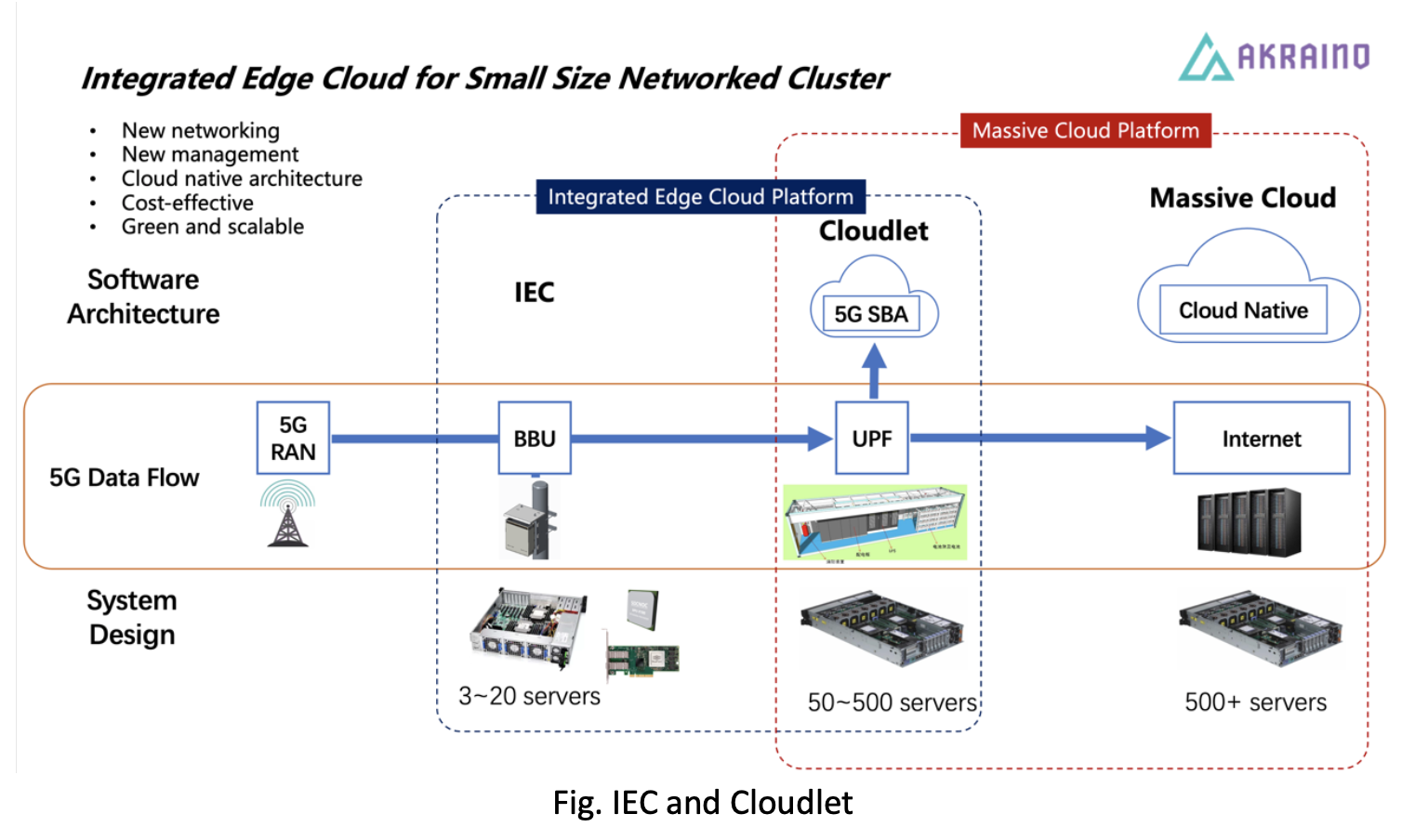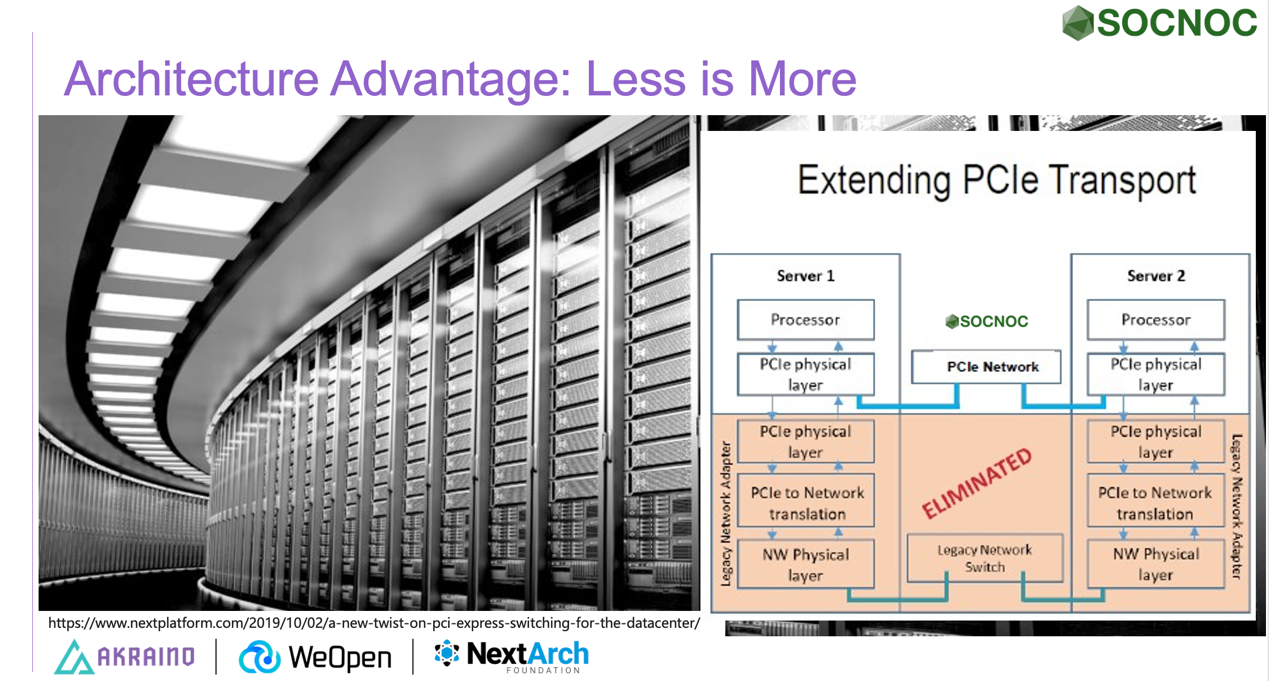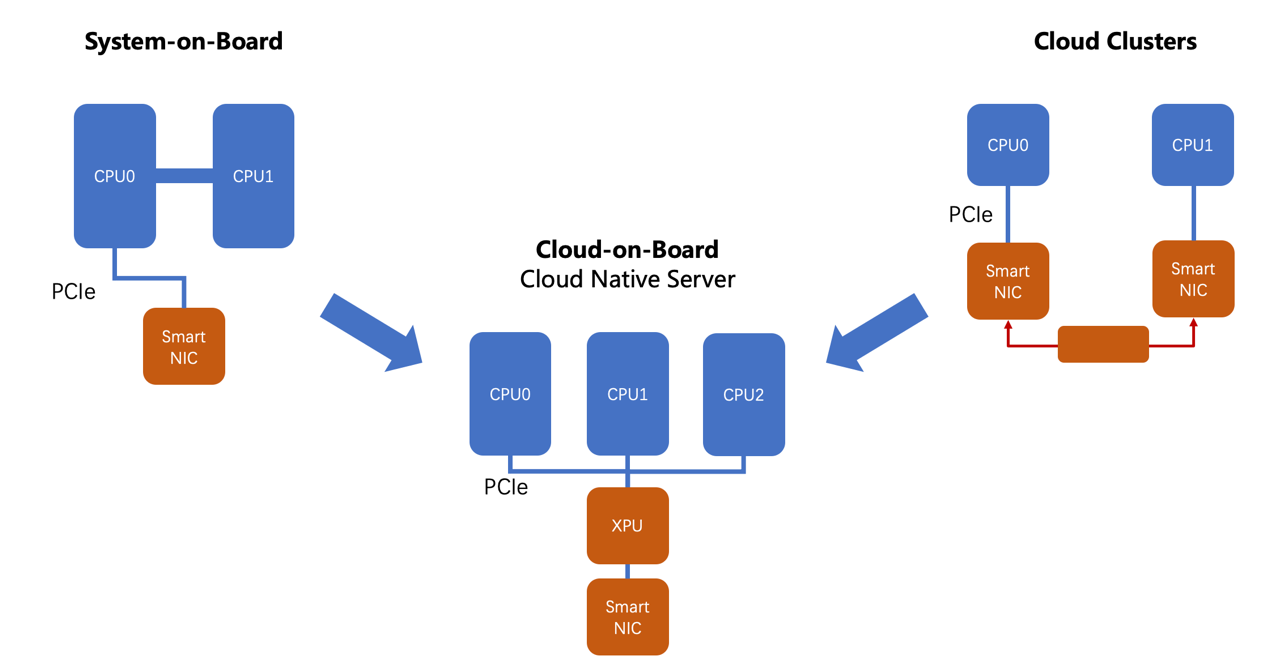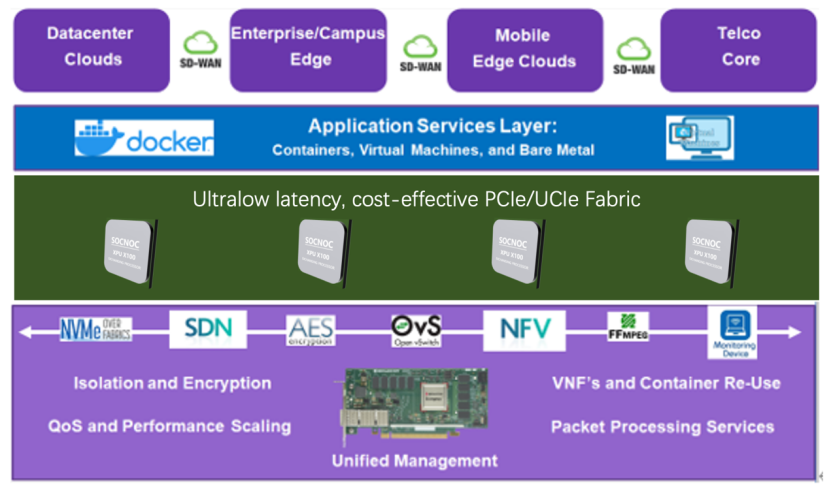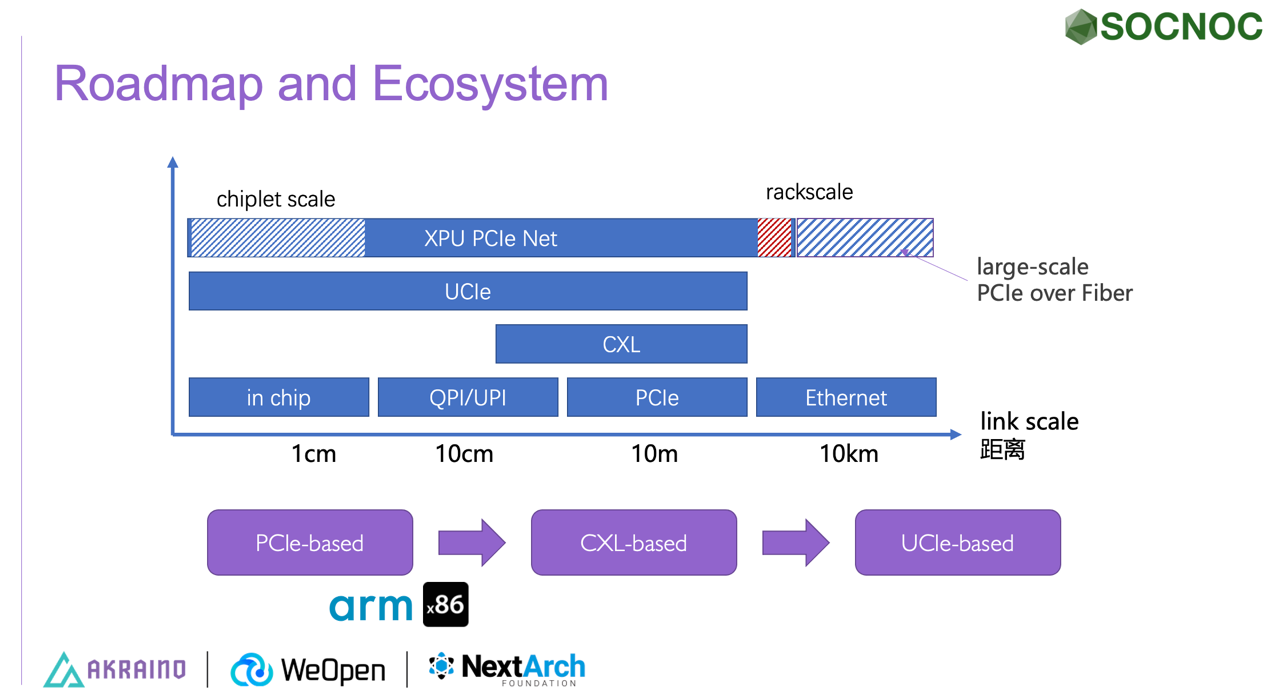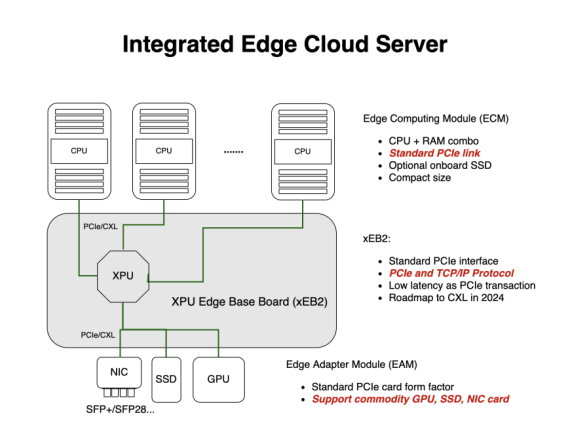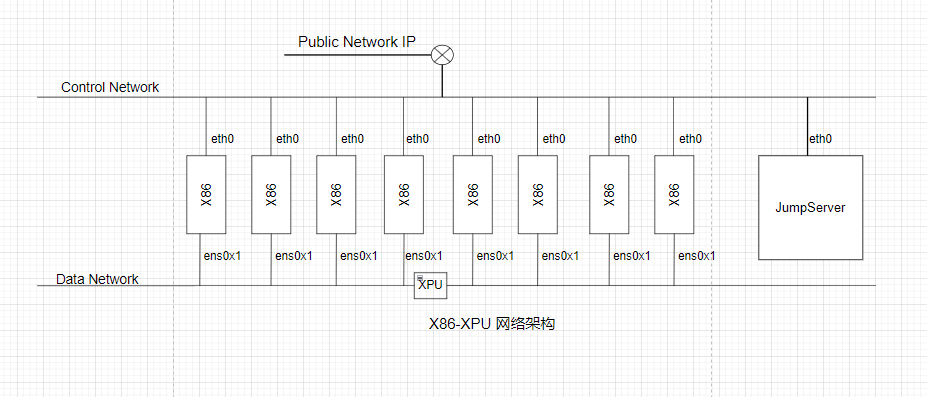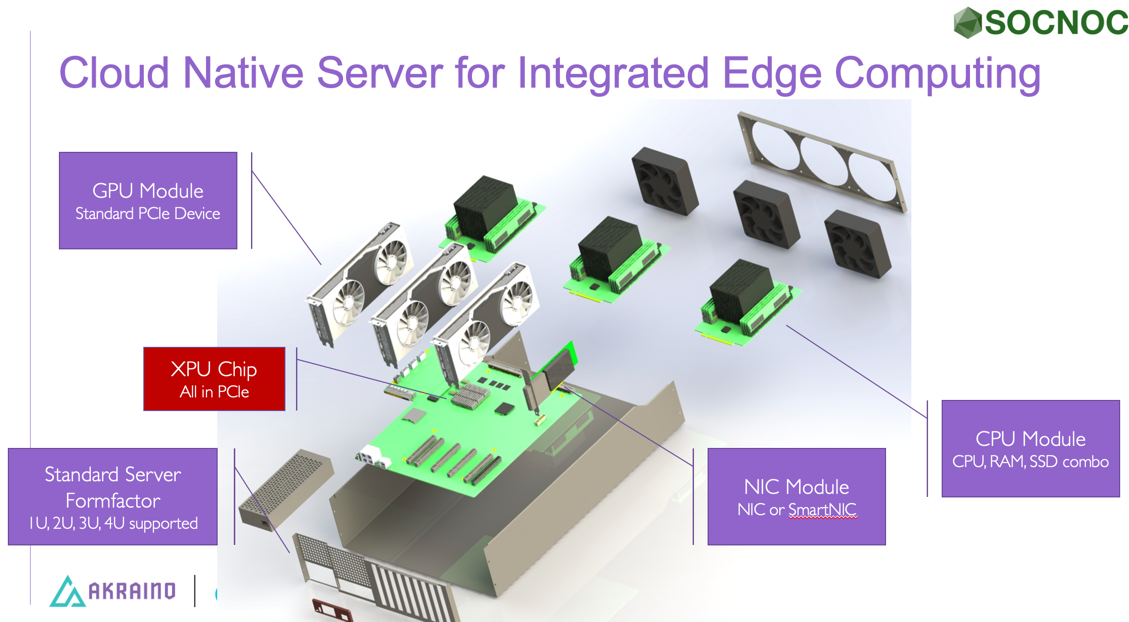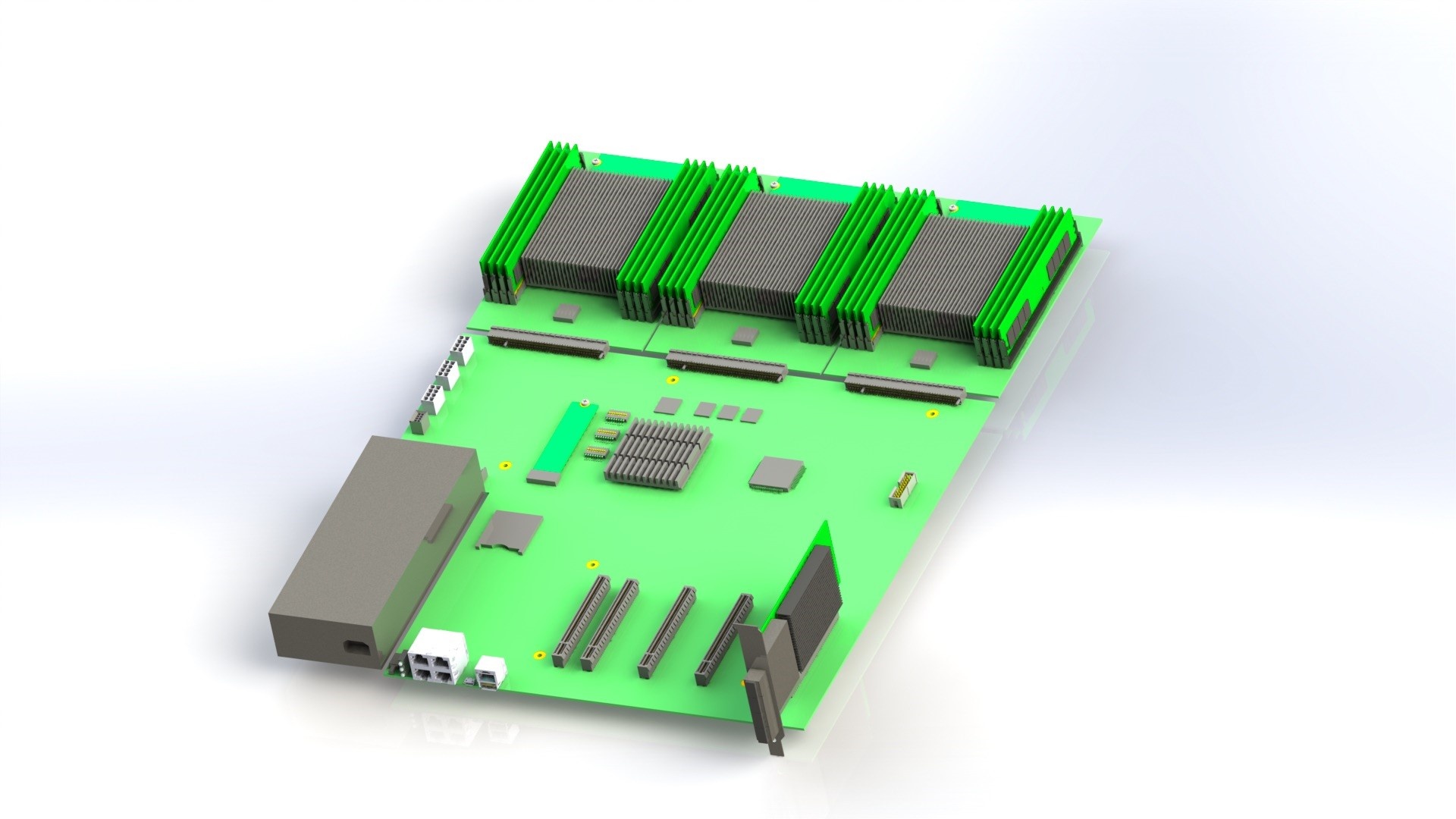Live demo
Cloud server management platform: https://dev.socnoc.cn/
Send email to demo@socnoc.ai for test account.
Blueprint overview/Introduction
Integrated Edge Cloud(IEC) is an Akraino approved blueprint family and part of Akraino Edge Stack, which intends to develop a fully integrated edge infrastructure solution, and the project is completely focused on Edge Computing. This open-source software stack provides critical infrastructure to enable high performance, reduce latency, improve availability, lower operational overhead, provide scalability, address security needs, and improve fault management. The IEC project will address multiple edge use cases and industry, not just the Telco Industry. IEC intends to develop solution and support of carrier, provider, and the IoT networks.
IEC Type 5 Release 6 is an innovative architecture for small-size edge cloud using data processor.
To meet the demanding increase of 5G data and the utilize the advantage of low latency and high bandwidth of 5G technologies, the number of small-size datacenter is increasing dramatically. Research shows there shall be more than 2.8 million cloudlet datacenters with less than 200 servers connected near the 5G tower. In IEC Type 5 project, we will build an innovative architecture for small-size edge cloud computing using latest and greatest data processor.
Application Case
- New networking architecture to lower the TCO of edge infrastructure
- TCP/IP compatible and cloud native for develops and developers
- Green to protect the environment for lasting development
- Scalable and composable to meet the dynamical workload
Where on the Edge
Business Drivers: SmartNIC is located in edge cloud servers, which belongs to the EC infrastructure and VPC, 5G UPF can use SmartNIC to accelerate the performance.
System Architecture
1. Extending PCIe Transport
To achieve low cost and low power, in R6, we introduce the latest and greatest technology to connect two servers directly with PCIe links via innovative data processors. In this scenario, we eliminate the legacy network adapters (such as NIC, optics and legacy network switches). In typical application, with PCIe networking, we can reduce the number of connection components by 75%.
2. PCIe Networking and Cloud-on-Board
By the advantage of PCIe networking, we can unified the system-on-board (SoB) connection and the cloud cluster topologies into one single and simple architecture, which we named as Cloud-on-Board (CoB) Architecture.
In the CoB architecture, we can connect CPU directly without additional adapters.
2.1 PCIe Extending DPU Cluster:
IEC Type 5 System Architecture
2.2 Roadmap
In R6, we introduce PCIe based data fabric. In the future, we will include CXL or UCIe based as well.
3. Hardware Design
3.1 Cloud-on-Board (CoB) Architecture
For general computing, we introduce the CoB with three major components:
1) Edge Computing Module (ECM): CPU+RAM+OS SSD combo,
2) Edge Base Board (EB2): for PCIe Data Fabric,
3) Edge Adapter Module (EAM): PCIe-compatible Device, such as GPU, NIC, SSD etc.
3.2 Networking Topology
In CoB design, we have multiple networks. At least one PCIe networking for multiple CPUs. Also we can introduce more connections as well as traditional RJ45 as the management ports as well. Hence all CoB Hardware are cloud native compatible at the beginning.
Networking in CoB system for Cloud Native Applications
Cloud Native Server Reference Design
At least, we pack all components together, and give a reference design as below.
Licensing
GNU/common license
